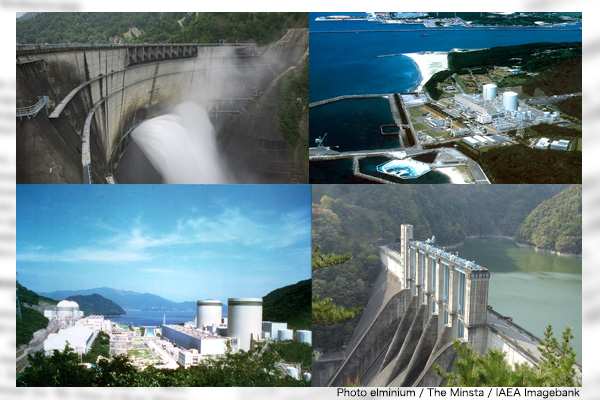I was invited by the House of Councillors Research Committee on Natural Resources and Energy to give opinions as an unsworn witness using data on which the Japan Institute for National Fundamentals study panel on energy based its policy proposal titled “The Answer to Decarbonization Is Nuclear Power Plant Utilization” (on April 12, 2021). I gave the following opinions, after explaining that the JINF study panel, including Jun Arima, a special professor at the University of Tokyo, who participated in negotiations on the United Nations Framework Convention on Climate Change, formulated the policy proposal covering the viewpoints in economic and defense fields as well as the engineering area.
Renewable energy failing to improve the CO2 emission coefficient
“Japan has the world’s third largest solar photovoltaics capacity at 67 gigawatts, equivalent to total capacity of 67 1-million-kW nuclear reactors, with solar panels installed throughout Japan. Solar PV capacity has exceeded the past peak nuclear capacity that had consisted of 54 reactors. China has the world’s largest solar PV capacity at 254 GW, followed by 74 GW in the United States. Germany has the fourth largest capacity at 54 GW.”
“But these countries lag behind many others in reducing the CO2 emission coefficient that represents the weight of carbon dioxide emissions for generating 1 kilowatt-hour in electricity. In Japan where renewable energy including solar PV accounts for 20% of total power generation, 534 grams of CO2 is emitted when a 1 kwh electric thermo pot is used to boil water in 1 hour. This is because liquefied natural gas and coal power generation accounts for 75%, with many nuclear reactors shut down. In Germany where renewable energy’s share of the power generation mix has topped 40%, the CO2 emission coefficient is 472 grams, not so different from the Japanese level. The German case indicates that Japan’s CO2 emission coefficient would not improve dramatically even when Japan reduces CO2 emissions by 46% in line with a government goal.”
“The CO2 emission coefficient is as low as 13 grams in Norway, 42 grams in Switzerland, 46 grams in Sweden and 70 grams in France. These countries feature high shares for hydro and nuclear power generation. Following them, countries with higher wind power generation shares feature low CO2 emission coefficient levels. The best option to achieve carbon neutrality, or net zero CO2 emissions, is the combination of hydro and nuclear energy.”
Lawmakers’ questions indicating chamber of wisdom
Lawmakers made questions that indicated the House of Councillors as chamber of wisdom. In response to a question by Taku Yamazoe from the Japanese Communist Party on contamination by radioactive substances in the event of a nuclear power plant accident, I explained about the role of filter vents to filter radioactive substances out.
When Hisatake Sugi from the Komeito party asked a question on stable electricity supply, I explained that rotational energy of steam turbines at fossil-fired and nuclear power plants is used to stabilize the electric grid. In answering a question on high-level nuclear waste by Yasue Funayama from the Democratic Party for the People, I explained that the period during which high-level nuclear waste remains harmful would be shortened from 100,000 years to 8,000 years by reprocessing of spent nuclear fuels and to 300 years by the power reactor innovative small module (PRISM), one of small modular reactors (SMRs).
As Satoshi Umemura of Japan Innovation Party asked how excellent human resources would be secured with existing nuclear power plants being decommissioned in the absence of new nuclear power plant construction or replacement, I answered that the development of new dream-inspiring plants including SMRs would be important. Asked about the prospect of stable electricity supply from SMRs and other sophisticated nuclear reactors by Ayaka Shiomura from the Constitutional Democratic Party of Japan, I proposed the development of new-type SMRs that can cooperate with renewable energy power generation facilities to quickly make up for output shortages for such facilities.
Tadashi Narabayashi is a specially appointed professor at the Tokyo Institute of Technology and a director at the Japan Institute for National Fundamentals.


